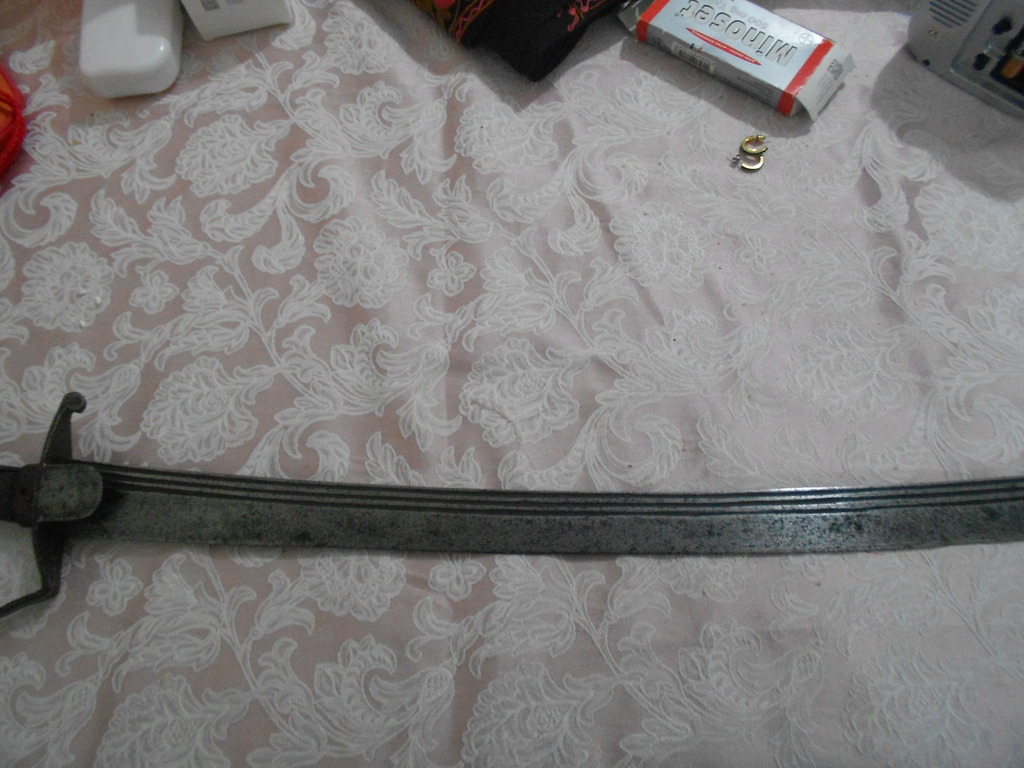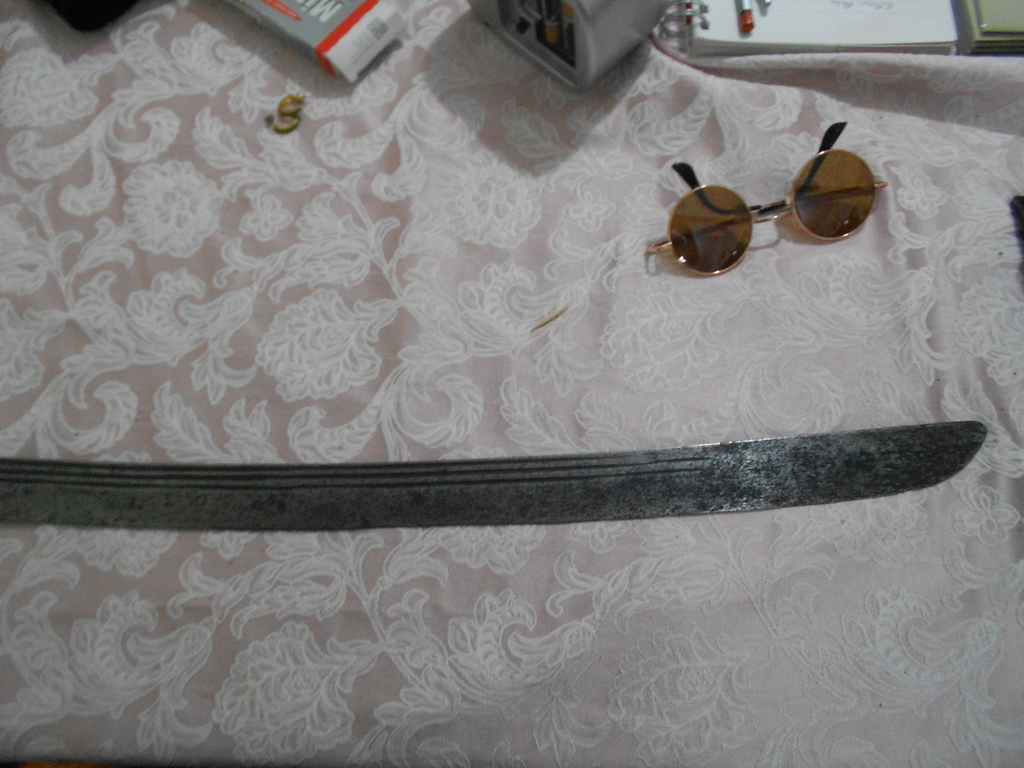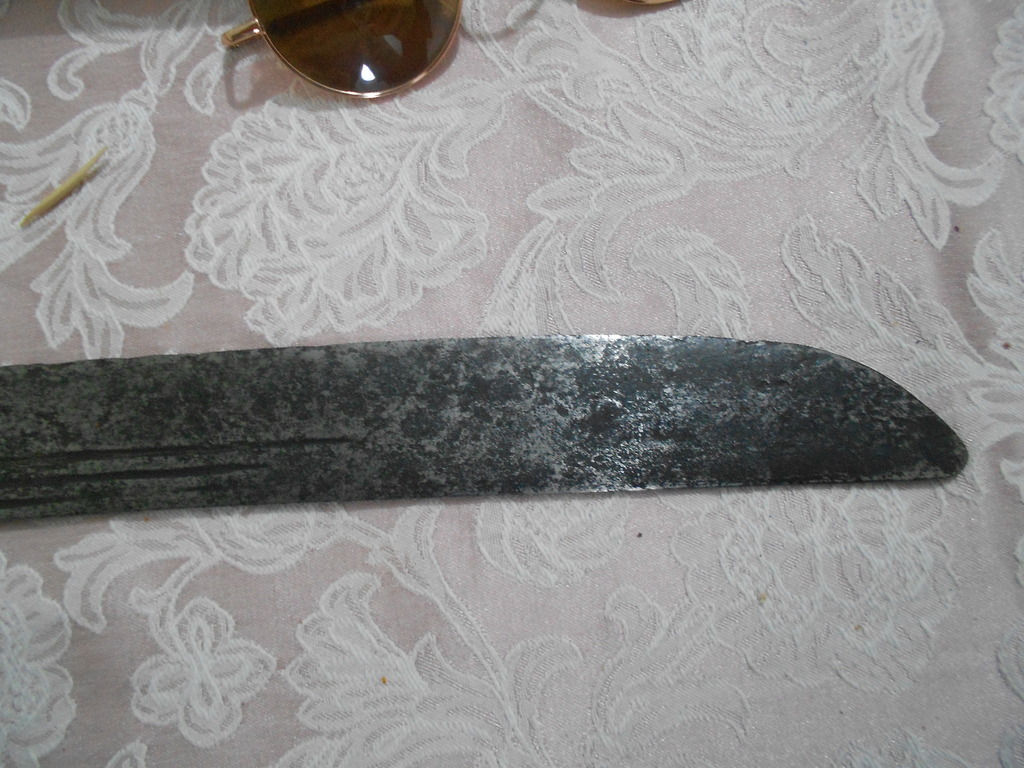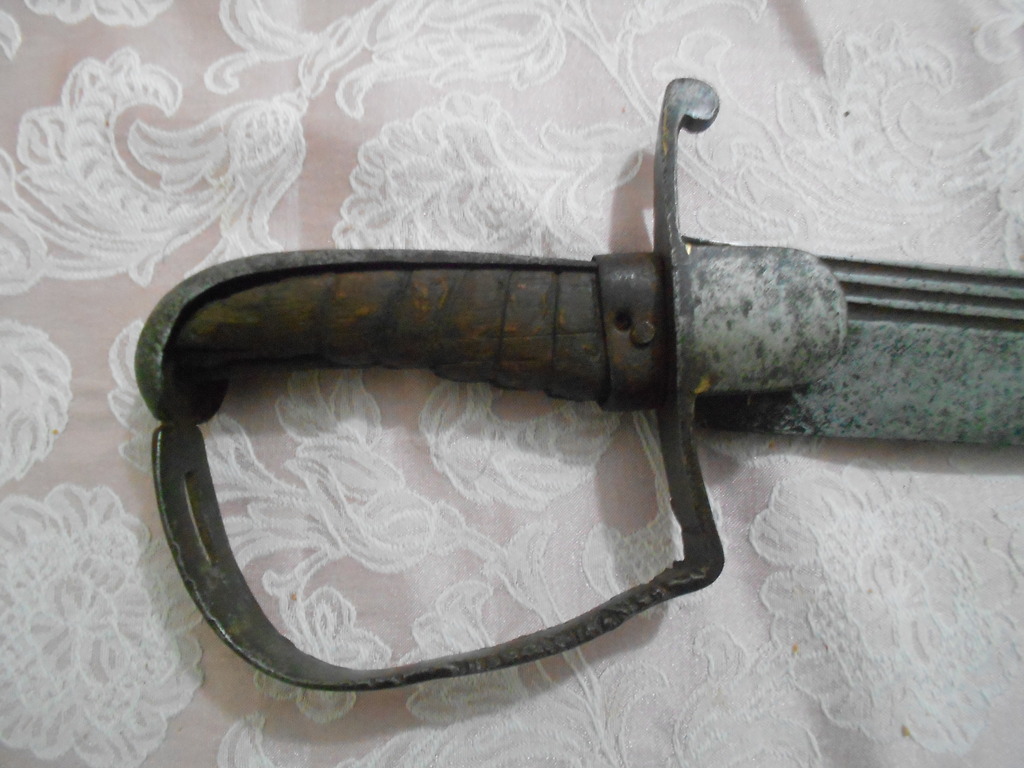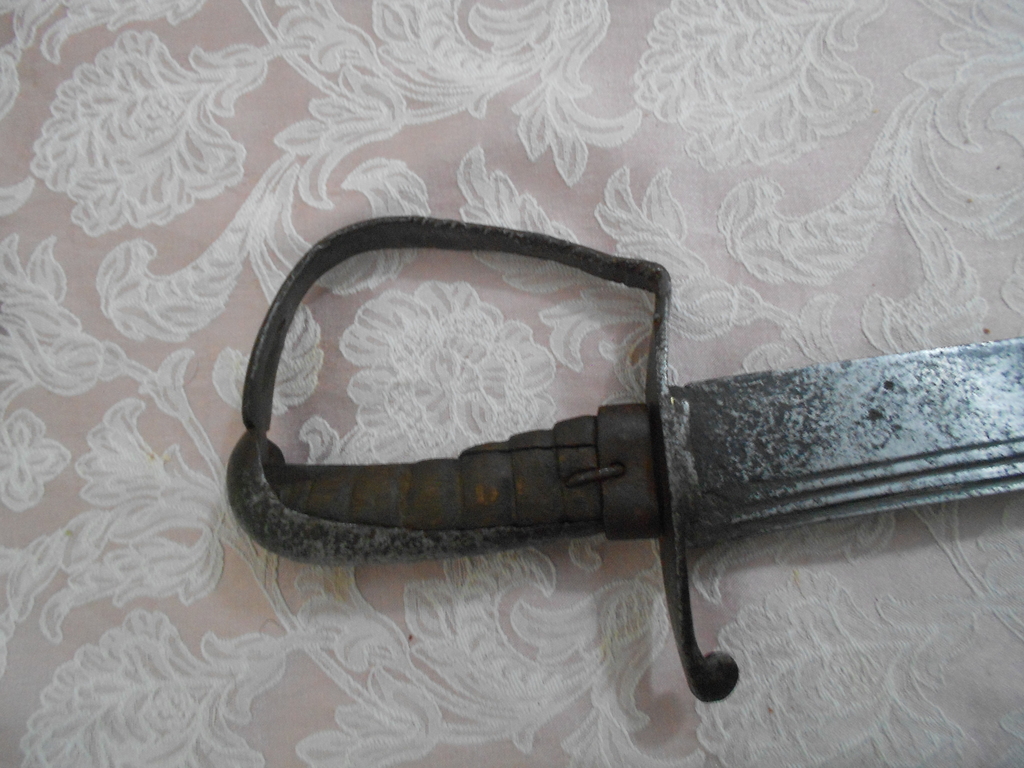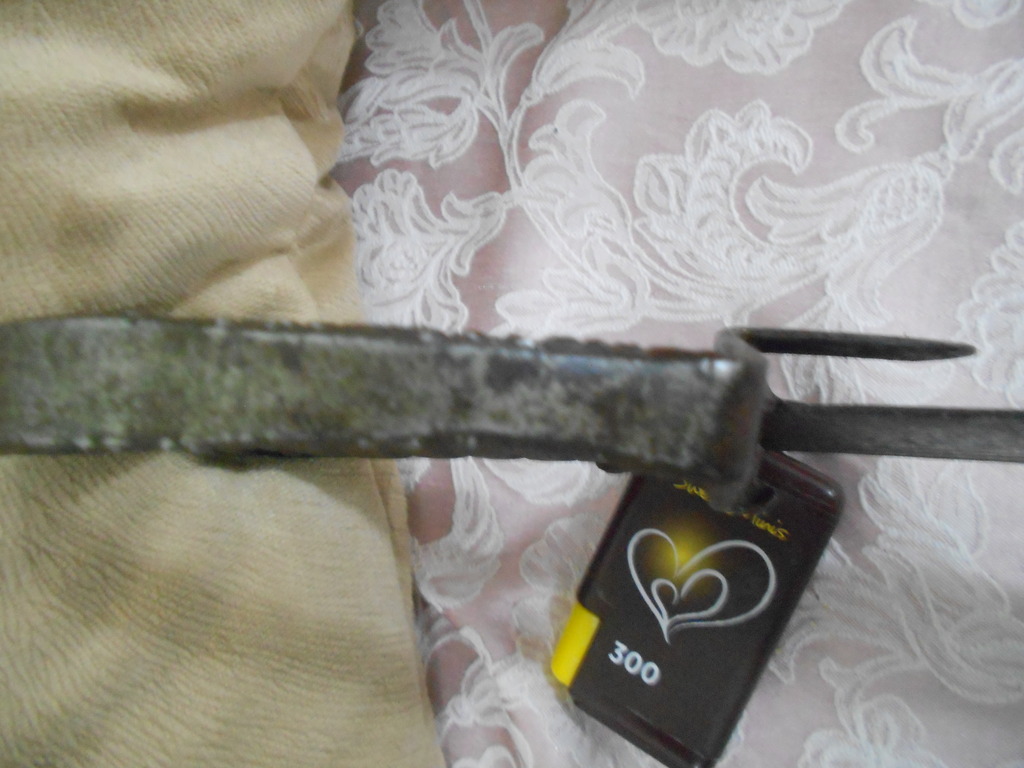This saber is bought by a friend from a local flea market. He asked me to identify it, but my knowledge on European military sabers is quite limited. It is not in a very good shape but looks like a genuine antique to my uneducated eyes. Yet I failed to find origin or pattern for this saber. Though for some reason, it feels really familiar.
Hopefully you guys' deep knowledge on the subject will help me solve this mystery.
The saber looks like it is quite worn out from overuse and got crudely repaired (perhaps on the battlefield?). It is a quite a long and wide blade but relatively thin with no kind of T spine. It has a quite simple triangular cross section with three narrow and shallow fullers near the back. There is no visible secondary bevel on the edge. It is still sharp with no visible major damage to the edge despite its thinness. It feels heavy to hold due to high CoG of the saber that points to cavalry usage.
The guard and the backstrap are made of steel, and quite solid. One of the langets is broken and the steel knuckleguard shows signs of real abuse, serrated from attacks from another sharp object (the romantic in me wants to believe this is due to many swordfights this blade saw, but who knows?) Tang is is hot peened to the hilt. Knuckleguard came loose in time and crudely repaired by a simple nail used as a rivet. The wooden grip is broken and loose.
Overall length : 91 cm
Blade length: 79 cm
Blade Width: 4 cm the bottom, 3.3 cm at the middle, 3.5 cm near the tip
Center of Gravity: 21,5 cm
Thickness: 5 mm at the guard tapers to 3 mm in the middle and to almost 1 mm near the tip


